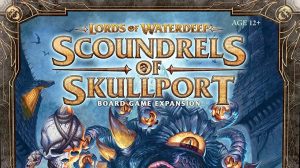Project GIPF is a series of eight abstract strategy games designed by Kris Burm. Each game features a hexagonal playing area and involves a dwindling of either pieces or playing area mechanic. The way they approach these elements is not only unique, but combines what I feel are the best qualities in most abstracts: simple rules that reveal complex game play.
If you’ve never heard the games within Project GIPF, GIPF, TAMSK, ZÈRTZ, DVONN, YINSH, PÜNCT, TZAAR, and LYNGK, I encourage you to seek them out, either in cardboard and bakelite or digitally online. They are well worth your time.
Today’s game: TAMSK

Before I start, I know some diehards may object to TAMSK being included here. That’s because in 2007, when Brum introduced TZAAR, he stated that it was replacing TAMSK in Project GIPF. Fine. When you write your review of Project GIPF, feel free to leave it out. Having played TAMSK, I know it deserves to be mentioned anytime Project GIPF comes up.
That’s because TAMSK, a game about balancing the falling sands of time against a quickly shrinking board, is a great game. A great game.
Playing the Game
Players start with the hexagonal, black board situated between them. Each player has three hourglass sand timers; one takes the black timers and the other takes the red ones. You’ll also have 32 white rings apiece.
Your ta(m)sk is to have the fewest of these rings at the end of the game.
The playing area is made up of tubes rising from the surface. The sand timers fit inside the tubes, while the rings fit around the outside. Along the outermost edge, the tubes are tall enough to equal the thickness of one of the white rings. The next hex ‘ring’ of tubes closer to the center are tall enough for two white rings. The next ‘ring’ will take three. The center tube will accommodate four.
The board starts much like the start of a Standard version of GIPF, with the three hourglasses at corners of the hexagonal board such that each color forms the three points of an equilateral triangle.

At the start of each turn, you’ll pick up one of your three hourglasses, turn it over, and place it in any available tube adjacent to where it started. Then, you’ll place one of your rings over the hourglass where it will fall around the tube the hourglass is resting in. As soon as one player has placed an hourglass in a tube, the next player may move. They do not have to wait for a ring to go over the just-played hourglass.
Once a tube has rings equal to its height, that tube is out of play. This means the outermost tubes can only be played in once, the second ‘ring’ of hexes twice, etc.
For an hourglass timer to remain in play, it must always have sand running from the top half down to its bottom. If an hourglass runs out of sand at the top, it becomes frozen on the board. The tube it stands in is blocked for the rest of the game.
The game continues until neither player can make any additional moves, either because their timers have all run out of sand or they have no legal moves. Again, the winner is the person who has the fewest rings at the end of the game.
TAMSK Thoughts
With the taller tubes being towards the center of the board, gameplay will naturally migrate towards the center. However, the outer edges can be good places to quickly discard rings while attempting to block in an opponent’s hourglass. (Remember, a frozen hourglass can’t move and, therefore, cannot help you get rid of rings.)
By introducing Real Time as a game mechanic, players are forced to make quick assessments of their hourglasses, their positions on the board, the positions of their opponent’s hourglasses, areas where their hourglasses might get trapped, and how you might trap one of your opponent’s hourglasses. All in split seconds.
With varying degrees of 3 minutes hourglass, there is no time for analysis paralysis in TAMSK.

TAMSK is the only game I play standing up. There is just too much happening too quickly for me to sit and feel like I’m able to take it all in. It’s also the only abstract strategy game that gets my adrenaline pumping.
Granted, this type of game is not for everyone. I once played TAMSK with a friend who, at the end of the single game we played, said, “I play games to relax and take my time between moves. I never want to play this again.”
Personally, I’ll play it anytime I can. It’s such an intense game, similar to Speed Chess, except you’re not clicking a timer after making a move—the timers are your playing pieces and you must manage all of them for both time and location.
TAMSK was removed as an official game in Project GIPF largely because of production costs. As a result, it’s been out of print for years and can be difficult to find. However, if an exciting abstract strategy game sounds intriguing, then this Pluto of the GIPF Project is well worth your time tracking down.
Here's a list of all Project GIPF reviews.









